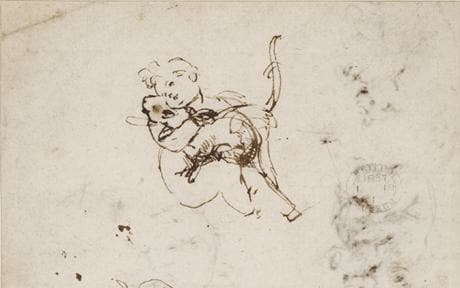One of my private delights in life is constantly finding links and a serendipitous "circularity" in life. I have just had a delicious example of such a coincidence.
When I was flying back from Spain this week, I used the trip as time to catch up on reading various magazines. In a number of the Spectator magazine, I noticed an advertisement for a guided tour by Curator Hugo Chapman for Spectator readers of an exhibit at the British Museum. The exhibition is entitled "Fra Angelico to Leonardo. Italian Renaissance Drawing" and features about one hundred master drawings from the British Museum collection and that of the Uffizi Gallery in Florence. I kept the magazine page to check out the British Museum website when I got home.
Today, I open up my e-mail for the first time, and what should I find but a delightful message from my friend and blog-follower in the United Kingdom, Marion Brown, alerting me to the same exhibition and its marvels. A wonderful coincidence. One that also makes me wish I could hop over to London to see it before the exhibition closes on 25th July.
Leonardo da Vinci, Studies of the Infant Christ and a cat, c. 1478-81. Photo: TRUSTEES OF THE BRITISH MUSEUM
Even browsing the BM website makes me realise that the drawing medium I love so much, silverpoint, is key to such an exhibition. The changing attitude to drawings, the role they began to play in artists' working methods and the intimate links back to classical time in Greece and Rome are apparently demonstrated by Hugo Chapman's choice of works to display. The characteristics of paper, too, are brought out in Dr. Chapman's blog, in that the drawings, when they arrived from Florence, needed to "rest" and acclimatise to their new environment. Since paper is a living organism, it adapts and changes when it is moved. Any artist who works on paper finds this out, almost the hard way, when a finished work suddenly develops undulations, for instance, even under glazing. Given time, the work will adapt to the new conditions and revert to its normal appearance.
Thank you, Marion, for telling me about this exhibition. It is interesting to watch how many more museums are mounting master drawing exhibitions, many of which are featuring silverpoint more prominently. The power exercised by drawings is eloquent. The directness and honesty of this medium - or media, given that there are pen and inks, metalpoints, chalks and later graphites - allow today's museum visitors almost to feel as if the artist is working in front of them, trying out ideas, peering closely at the human body, altering and correcting things. The span of centuries means nothing as one looks at a drawing; its voice is singular and commanding, eloquent of the artist's vision.
If you are lucky enough to be in London, I suspect this exhibition will be well worth a visit. Failing that, the catalogue, Fra Angelico to Leonardo. Italian Renaissance Drawings", would be a lovely possession, I know. Now to order it.

